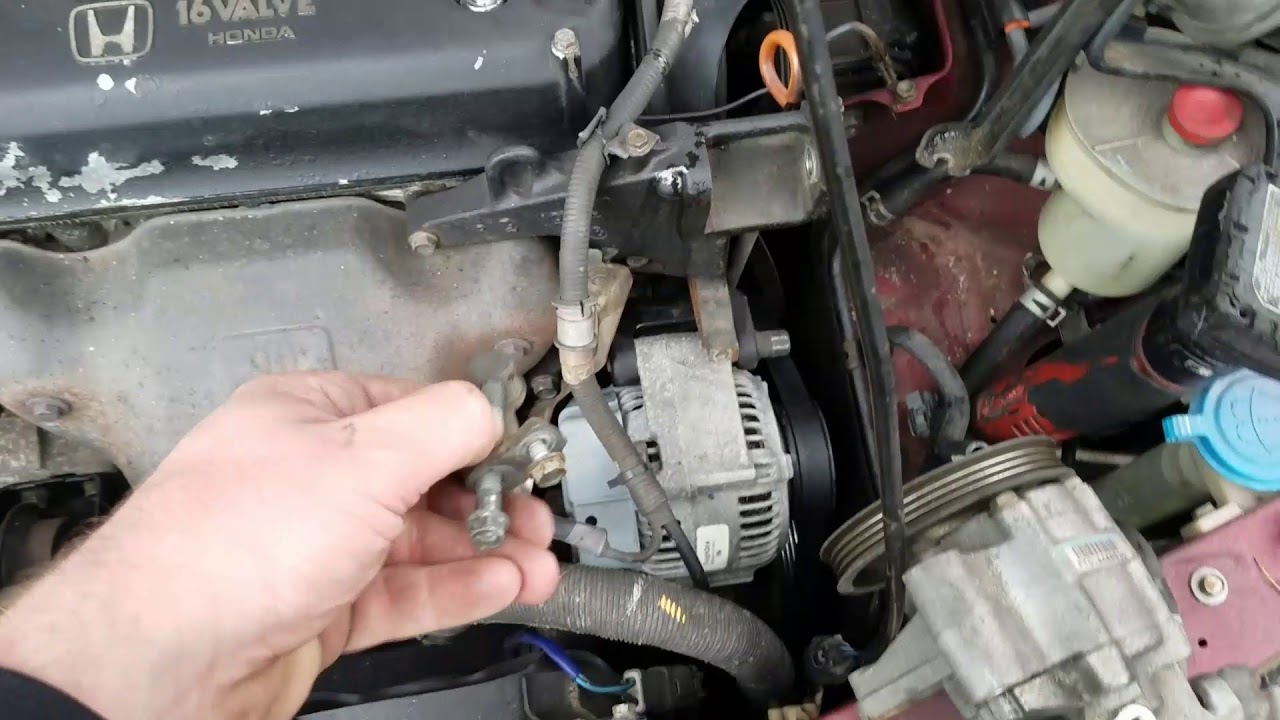
2003-2007 Accord 2.4 10 minute alternator replacement
Honda Accord Alternator FAQ
An alternator is a module in the car electricity chain feeding the entire system and powering the car’s battery. It gets activated by the engine through the special belt transmitting the crankshaft motion to the alternator inner mechanism.
The alternator mechanism has a rotor and stator parts that produce the alternate current in the magnetic environment. The rotor spins activating the stator’s three windings producing each a phase of a current. Let out through the diodes, this high-voltage current is transformed into the DC one, which is used for powering the cell and car appliances like ignition mechanism, inside and exterior lights, board computer, car outlets, and so on.
The alternator parts are secured in the metal housing (usually aluminum, as it doesn’t have magnetic properties and is good for heat dissipation). It has vent openings on the sides and five types of terminals wired to the power bank, ignition switch, warning light, and regulator bypass.
– Inconsistent light. If the headlights and the panel lighting begin flicking and grow brighter or dim, it means the alternator should be checked. Dim lights mean the power is insufficient and the car can stop once the battery is drained. Bright lights show the overcharge the alternator produces on the power cell and the system.
– Poor operation of the electric modules. Central lock delayed response, slower or non-working power window, and even starter problems could be caused by the bad alternator.
– Quickly draining battery might mean the alternator doesn’t provide enough power to serve the system.
– Unusual sounds. Squealing or grinding heard under the hood might show the alternator needs to be fixed.
1. Unhook all the wire leading to the battery. This can be one or two leads (usually marked “B” and “S”).
2. Unplug the rest of the wire. Good thing is to mark each wire and its port (to connect them properly afterward).
3. Take off the belt. Find a tensioner and hover it to slide the belt away. Use a wrench or another fitting tool.
4. Unscrew the mounting bolts and take off the alternator.
5. Put a new alternator in place and secure it with the bolts.
6. Put a belt on all the bearings and make sure the tensioner is secured tightly. Ensure the belt doesn’t sag.
7. Hook up all the wire, the battery leads going the last.

My name is Brandon, and I’ve been interested in cars since I was a kid. I got a bachelor’s degree in Automotive Technology and worked in a private car workshop. I have two cars that have been completely upgraded with my own hands. So I successfully put all my knowledge into practice.
Last update on 2025-12-24 / Affiliate links / Images from Amazon Product Advertising API
